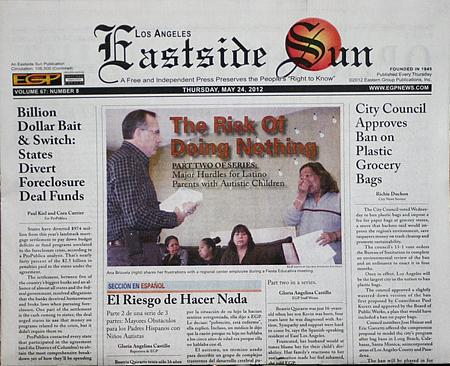How I Got the Story: Latino Parents With Autistic Children Face Major Hurdles

Three years after my own son was diagnosed with Autism, I’m still confronting what seems like a bottomless pit of news and research on the Autism Spectrum Disorder.
Keeping up with and digesting the information on Autism is often daunting and intimidating because of the science and bureaucracy involved. It’s also difficult to approach the topic without it tugging on my heartstrings.
I subscribe to email blasts on the topic from local resources, and as a journalist, I’m fortunate to receive press releases related to the topic, which, at least in theory, gives me greater access to information and resources to help my son than the average parent of a child with Autism.
As a bilingual and bicultural individual who reads and writes professionally in both English and Spanish, the absence of information in Spanish, either written specifically for Latinos or general information translated from English to Spanish, was hard to ignore.
The series, “Latino Parents With Autistic Children Face Major Hurdles,” was inspired by my experiences as a parent in search of information, and is the first time I write about the issue in depth. The three-part bilingual series — written and published in both Spanish and English — focused on the issues that make it difficult for local monolingual Spanish-speaking parents in the East Los Angeles area to find information about Autism and available services.
Part 1 explores the growing prevalence of Autism nationally, according to a recent CDC report, which does not include data from California that has the largest Latino population in the country. It also explores the breakdown in accessible information for Spanish-speakers.
Part 2 discusses what happens when parents delay therapeutic interventions. It also looks at the cultural and institutional barriers that keep Latino parents from seeking help for their children with autism. And Part 3 questions the quality of translation available, and notes the laws that mandate certain rights for the developmentally disabled, including people diagnosed with autism.
There were many “barriers” to writing this series, particularly since I was focusing in on a population that is vastly underserved. I had to learn about special education policies in the local school district and the structure of the local regional center, the two biggest providers of serves for the developmentally disabled. I also had to learn more about disability rights laws and how they apply to people with autism. I also researched local experts and organizations that provide support in the immediate area. I attended every local meeting and conference I could find on autism, with local being the key word. There are things happening in other areas, geared to more affluent English speakers, but local resources are harder to find, though some groups did help me find parents to interview.
Many of the local and national groups were quick to point out that they have some information or services available to Spanish speakers, and to defend their outreach, or intentions to outreach to this segment of the autism community. They blamed a lack of money as the reason they are not doing a better job.
After months of research and interviews, organizing the story and condensing the information was a major a challenge. Tough decisions had to be made, do I focus a lot of time on describing the many ways that autism manifests, or write the series from the view that the diagnosis has already been made and go from there? It was frustrating not to be able to include all the one-on-one interviews, to in a sense sacrifice their stories in order to provide more information.
Response to the series was immediate by members of the autism advocacy community, and the stories were quickly shared on Facebook, Twitter and other social media websites the same day they were published.
However, as suspected, the reaction in Spanish was less evident. This could be due to the same digital divide that forms a barrier for Spanish-speaking parents to acquire information on autism in the first place, as discussed in the first part of the series. But because the story was in a newspaper delivered to homes, local libraries, businesses and recreation centers, it’s likely many Spanish speakers did get information about autism for the first time.
Also, the series is likely to contribute to the discussion on Autism in both the local and national arena, and may serve to shed light on the barriers and needs of a less-than vocal, but large segment of the community.
The series was published in all 11 of Eastern Group Publication’s newspapers and on the chain’s website, it was produced in collaboration with the USC Annenberg/California Endowment Journalism Fellowships.

